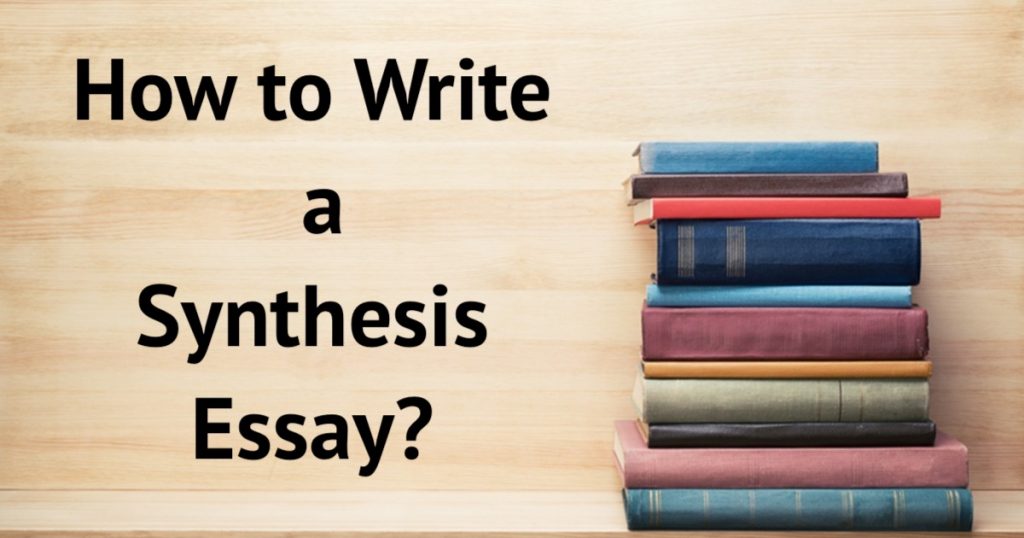How to Write a Synthesis Essay?
Synthesis essays are a common type of advanced essay writing that aims to prove a claim with substantial evidence to back that claim. The unique characteristic of this type of essay is that the writer is expected to draw from multiple sources and fully understand those sources in order to make relationships between them and argue or explain a point. How to write a synthesis essay might seem intimidating, but there is a straightforward formula that the writer can follow to successfully argue their point.
The first steps to writing a synthesis essay are just like writing any other essay. Before beginning, the writer should fully understand the prompt by reading through it carefully. The goal of a synthesis essay is to draw a unique viewpoint, so having a firm grasp of the material is key. Understanding the assignment or the goal of the essay will help develop a strong, clear argument that the reader will want to follow. At this point, the writer should have at least a general idea of a thesis in mind. This can be difficult because the source material might change the direction of the essay. For this reason, it’s important to have a tentative thesis prepared while also remaining open and flexible if the supporting sources direct the essay in a different way.

The next step after forming a preliminary thesis depends on the nature of the assignment. If the writer has been provided with a set of source material, they should read through this material to synthesize its content. While reading, the writer should practice close reading, which is slower, more comprehensive reading, not skimming. Through this process, some sources should begin to stick out as possible supporting evidence. Keep these sources aside for evaluation later. At the same time, it will be apparent that some sources are not useful for the essay. Don’t try to force these into your argument. The point isn’t to connect every source, but rather to coherently prove a point based on multiple sources. However, these other sources can sometimes be useful to help argue against other points in order to fully support your own point, so it’s important to close read every source.
Choosing sources can be more difficult if the reader is expected to find them and they are not provided. In this case, the reader should practice skimming of sources to quickly weed out irrelevant ones. It’s important not to get distracted by an unimportant source. Don’t try to fit a source into the essay, if it doesn’t work, just move on. After weeding through sources, the writer should have a group of potentially useful ones that they can then closely read.
At this point, the writer should have a definitive thesis based on their preliminary analysis of the prompt and their close reading of the sources. A thesis is typically one sentence or a few sentences that should be clearly stated so the reader understands what is being argued. It should be included in the introductory paragraph of the essay in which the writer highlights the nature of the prompt and introduces their viewpoint and then states the thesis. In the next paragraphs, the critical thinking and synthesizing begins. Keeping in mind the unique viewpoint, the writer should use elements of each of their chosen sources to construct a solid argument to prove or support their thesis. It’s important to remember that a synthesis essay is an interpretation of a theme or issue, so while the writer may have one argument, the potential readers may disagree. Differing opinions are not uncommon with synthesis essays. The point isn’t necessarily to make the reader believe sometime, but rather to use sources to argue that the thesis is indeed valid based on the evidence provided. This means that when choosing the aspects of each source, try to be as clear as possible and only use evidence that is relevant. The reader can begin to pick apart each source, which is why the writer should have multiple sources to support each other.
Once the sources have been synthesized to support the thesis, the writer should conclude their argument. The conclusion is one of the most important parts of an essay because it is the last chance to remind the reader of the important details of the argument. The conclusion should include a reminder of the thesis, short summaries of the key elements of the supporting sources, and a statement that ties the two aspects together. The conclusion is not the place to add any new information, it should be a summary of what was just read in a clear, concise manner.
While how to writer a synthesis essay might seem intimidating, it’s actually a straightforward type of essay that most writers will come across at some point in their academic or professional careers. Just remember to spend a little extra time formulating a thesis and fully comprehending the source materials. It will make the process of writing smoother and more successful.
